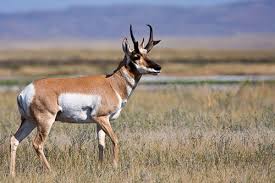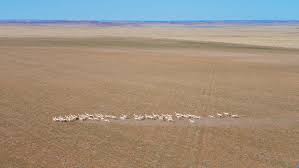
Environmentalists have gone to court to stop the Trump administration to allow 3,500 new gas wells in southwestern Wyoming, contending the wells will interrupt an historic migration route for the Pronghorn antelope.
The area in question is also where antelope have historically traversed a 170-mile migration route every year for 6,000 years. Conservation groups filed a legal petition challenging the government’s plan, alleging the government approved the wells without properly analyzing the potential harm to pronghorn and other wildlife. Their challenge contends the wells would prevent access to winter ranges for the pronghorn.
Migration memory is passed from parent to offspring among ungulates, said the conservationist Linda Baker, the director of the Upper Green River Alliance. “If we cut off their migration route, that memory is lost and not likely to be regained in the life of a pronghorn. This area is a high cold desert, so they survive on sagebrush. If they can’t get to traditional winter ranges on these pathways, they won’t survive.”
The migrating animals belong to the the Sublette herd, which has already declined by 40% in the past decade. About 300 animals from this herd live in a summer range in Grand Teton national park in north-western Wyoming and travel the Path of the Pronghorn to their winter range in the Upper Green River Valley in south-east Wyoming.
But pronghorn also exist in Oklahoma, especially in the Panhandle and the western part of the state.

The northern portion of their route is protected as the nation’s first national pronghorn migration corridor. Oil and gas leasing and development is closed, wildlife overpasses and underpasses have been installed along major roadways, and millions of dollars in wildlife-friendly fencing have replaced barbed wire fences that prevented pronghorn passage.
But the southern portion, where the Bureau of Land Management (BLM) permitted Jonah Energy to build the 3,500 new wells, enjoys no such protection. In fact, the migration corridor on this end has already been narrowed by two existing neighboring gasfields.
Studies show pronghorn do not deviate from their ancient routes, so blocking access to these southerly habitats might destroy the park’s entire pronghorn herd and further reduce the Sublette pronghorn population.
“We’re very concerned about what this could do for the pronghorn of Grand Teton national park,” said Kelly Fuller, the energy and mining campaign director at Western Watersheds Project. “BLM never analyzed these impacts, even though they knew this could happen. They never analyzed what would happen to the park if it lost its pronghorn, or what would happen to communities that promote pronghorn migration for tourism.”
The BLM is currently reviewing the legal petition, but it told the Guardian that it believed the energy permits complied with rules regulating wildlife and conservation.
“If this corridor is destroyed by natural gasfields, the people that come to Grand Teton to see these amazing animals will no longer be able to see them,” said Baker. “It’s just not acceptable to let a beautiful species like this go extinct in one of our most iconic national parks.”
Source: The Guardian





